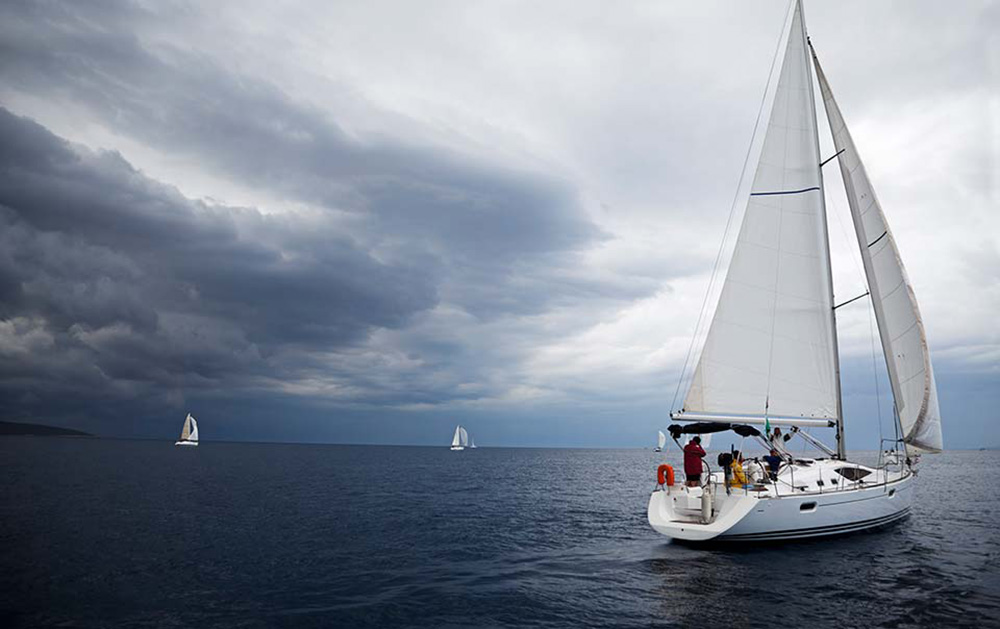The summer season has the potential to bring fun-filled days and enjoyment for many boat owners. Experienced mariners know fickle weather is a fact of life, but some weather events have the potential to seriously damage or even destroy your vessel. If a tropical storm or hurricane is forecast on the horizon, having a plan in place can help you to prepare your boat for many possible circumstances — whether you plan to haul it out to dry storage or keep it in the water.
If at all possible, consider hauling your boat out of the water. It is important to not delay this action because as a storm gets closer, your boat ramp or marina may become congested as more boat owners take the same action. Hauling can help protect your boat against damage from contact with the dock or improperly secured vessels.
Also consider the anticipated tidal surge, and if this will overcome the location near the marina or boat ramp, consider moving the boat further inland or find a convenient area of higher ground where you have already received permission to place your boat until the storm passes. Remember, if you plan to keep your boat on land, be sure to remove the drain plug to help prevent water from collecting in your vessel.
If you cannot remove your boat from the water, plan to improve the location where it will remain docked or moored. First, double up all lines and confirm they are in good condition and long enough to accommodate storm surge. Then, inspect the cleats and dock conditions where these are to be secured. Sometimes it is best to secure additional lines around fixed pilings, if available. Add chafe gear protection where the lines will be in contact with sharp or rough edges and install extra fenders to prevent damage to the hull.
Finally, if your boat will be on a mooring, or another place to secure a vessel in the water, consider the use of additional anchors to supplement the mooring. In some cases, a three-point anchorage can assist the vessel in handling an inbound and outbound tidal surge better, especially in congested mooring fields. Whereas, reinforcing a single point mooring may be best when there is plenty of room around the vessel to swing as the surge passes inland and back out to sea.
Regardless of whether your boat will be on land or in the water during severe weather, follow these tips to help protect it from damage:
Create a written plan and checklist of the steps you intend to take when severs weather is in the forecast. Once you have created a written plan, take some time to test it and practice implementing the procedures you have developed.
Once the weather clears, if you find your boat has sustained damage be sure to call or contact Sea Mountain Insurance today for any of your insurance-related questions.
Questions about marine insurance? Contact a Sea Mountain Personal Insurance Specialist today!
